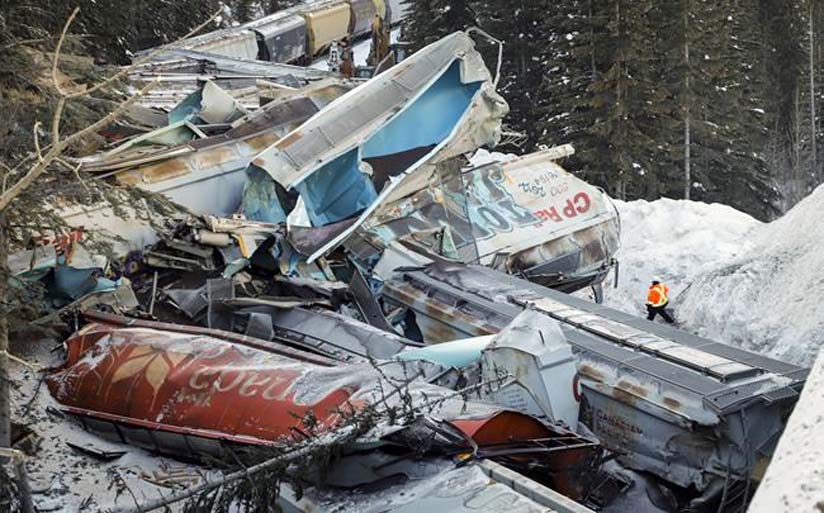
Gatineau Quebec - The Transportation Safety Board (TSB) says there should be a better way of determining whether a train's brakes are
working as they should.
The agency wrote to Transport Canada (TC) last month asking what it intends to do about shortcomings with the current method for testing air
brakes.
The issue came up during the board's ongoing investigation into a Canadian Pacific (CP) train derailment near Field, B.C., that killed three railroaders last
year.
The agency says that train passed the Number 1 brake test in Calgary before it set out on the fatal trip.
The Number 1 test is meant to verify that at least 95 percent of a train's air brakes are operative, but does not physically measure their force or
effect.
The safety board says research comparing brake testing methods, along with concerns flagged by CP employees before the Field derailment, suggest the Number 1
brake test is not reliable.
"Given this information, TC is advised that an alternate approach to determining the effectiveness of freight car air brakes is required to ensure that
departing trains have sufficient effective brakes to operate safely," the board wrote in its 17 Apr 2020 letter.
"The TSB would appreciate being advised of TC's position on this issue, and what action, if any, will be taken in this regard."
The Vancouver-bound CP grain train was stopped on a mountain slope in the frigid early-morning hours of 4 Feb 2019 when it began moving on its own, sped down
a treacherous hill in Yoho National Park and plummeted from a bridge over the Kicking Horse River.
Conductor Dylan Paradis, engineer Andrew Dockrell, and trainee Daniel Waldenberger-Bulmer died.
Ninety-nine of the train's 112 cars and two of its three locomotives derailed.
The train's previous crew had been unable to control its speed and brought it to an emergency stop before the crash, the safety board said.
The agency noted in its letter that TC, the National Research Council (NRC) and CP began a research project in 2015 looking at an air-brake test called
automated train brake effectiveness.
Researchers examined wheel temperature data from detectors at the bottom of big hills where prolonged applications of air brakes were needed to control train
speed.
Early results in 2016 found a high frequency of grain cars with cold wheels were under-braking.
Researchers then compared that test with the Number 1 brake test on 44 grain trains.
The testing being researched found 695 cars with ineffective brakes, whereas the Number 1 brake test only found five.
The board also said in its letter that it reviewed hazard notifications that CP employees had submitted to the company's health and safety committee before
the fatal derailment.
It found several cases where train crews had difficulty controlling speed in cold weather while descending the same steep hill in the Rocky Mountains where
the crash happened.
"These hazard notifications document air-brake performance issues on unit grain trains that had successfully passed a Number 1 brake
test."
TSB spokesman Alexandre Fournier said TC has not responded to the letter, and is not required by law to do so.
Lauren Krugel.
 What was the
age of the 99 wrecked grain hoppers? One would suspect they were mainly comprised of older cars. It is only recently due to a federal legislation change that
both railways have seen fit to invest in new grain cars. The old Trudeau hoppers are well-past their prime.
What was the
age of the 99 wrecked grain hoppers? One would suspect they were mainly comprised of older cars. It is only recently due to a federal legislation change that
both railways have seen fit to invest in new grain cars. The old Trudeau hoppers are well-past their prime.
provisions in Section 29 of the Canadian
Copyright Modernization Act.
